 |
 |
 |
| |
Current Trends in Liver Transplantation among HCV-Infected Baby Boomer
Generation in the United States: A Case for Birth-Cohort Screening
|
| |
| |
Reported by Jules Levin
AASLD 2015 Nov 13-17 San Francisco
Ryan B. Perumpail1 Andy Liu2 Channa R. Jayasekera1 Douglas Dieterich3 Zobair M. Younossi4, 5 Robert J. Wong6 Aijaz Ahmed1
1. Division of Gastroenterology and Hepatology, Stanford University Medical Center, Palo Alto, CA, United States.
2. Medicine, Albert Einstein College of Medicine, Bronx, NY, United States.
3. Division of Liver Disease, Icahn School of Medicine at Mount Sinai, New York, NY, United States.
4. Medicine, Center for Liver Diseases, Inova Fairfax Hospital, Falls Church, VA, United States.
5. Betty and Guy Beatty Center for Integrated Research, Inova Health System, Falls Church, VA, United States.
6. Division of Gastroenterology and Hepatology, Alameda Health System, Highland Hospital, Oakland, CA, United States.
From Jules: AGAIN, we need ROUTINE HCV Screening in the US, it is the most effective & economic way to eliminate HCV.
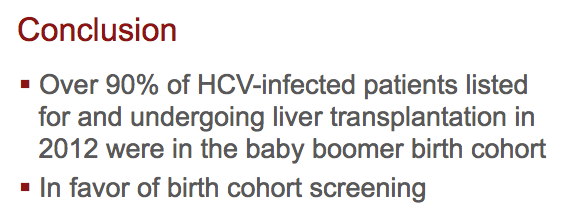
Nevertheless, our analysis demonstrates that over 90% of HCV-infected patients listed for and undergoing liver transplantation in 2012 were in the baby boomer birth cohort. This argues in favor of birth cohort screening given that patients suffering from HCV-related end stage liver disease are increasingly and disproportionately represented by the baby boomer birth cohort. Earlier diagnosis and pre-emptive treatment of HCV infection with generally safe, well-tolerated, and highly efficacious direct acting antiviral drugs may delay or reduce the need for liver transplantation in this group. Testing and linkage to care for HCV-infected persons, particularly those in the birth cohort, is expected to reduce HCV-related morbidity and mortality, though needs to be further investigated.
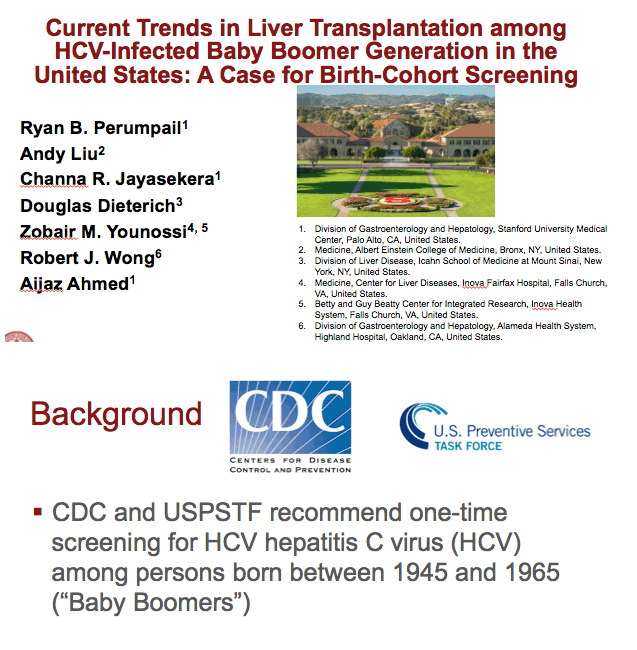
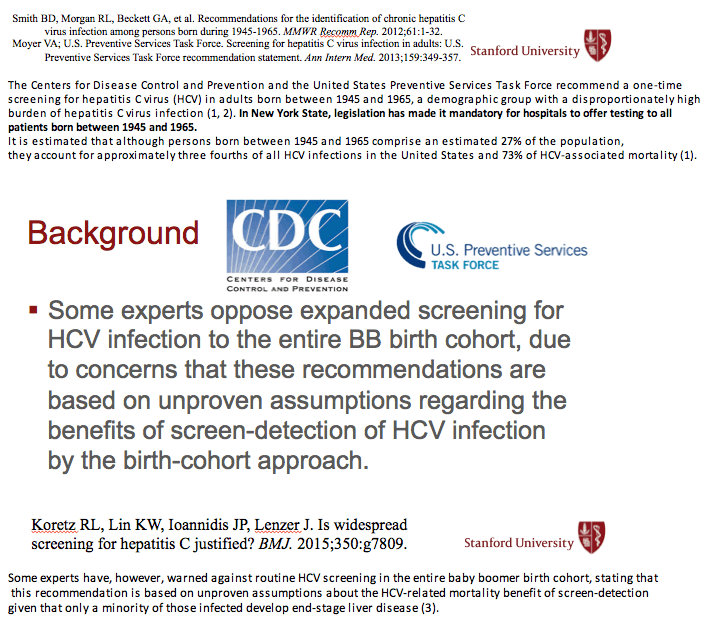
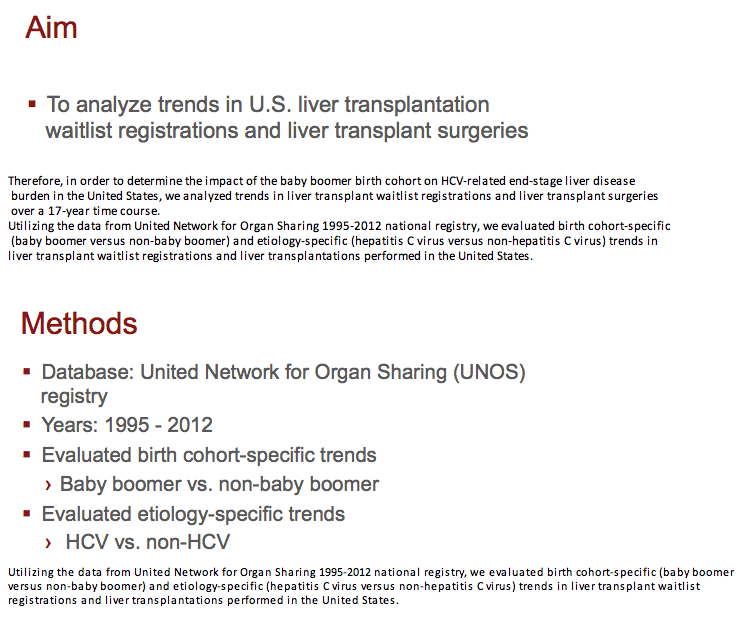
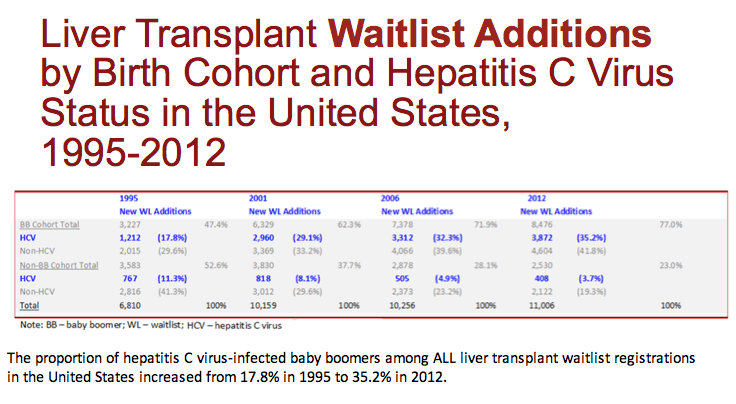
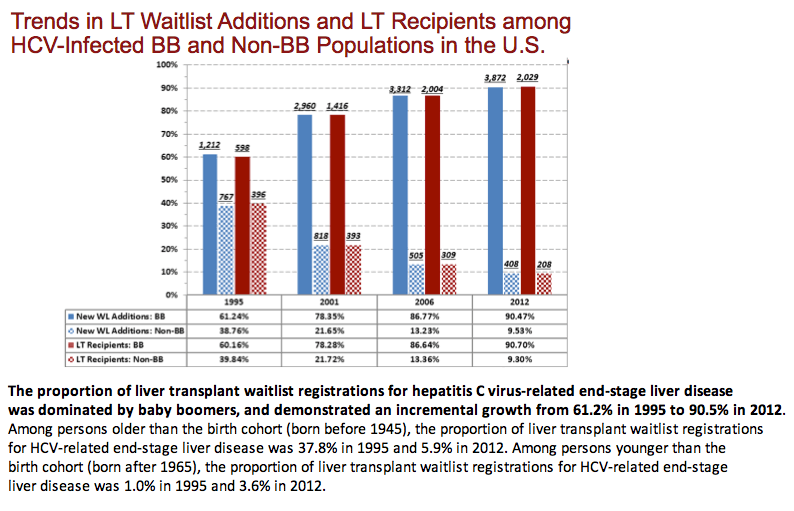


|
| |
|
 |
 |
|
|